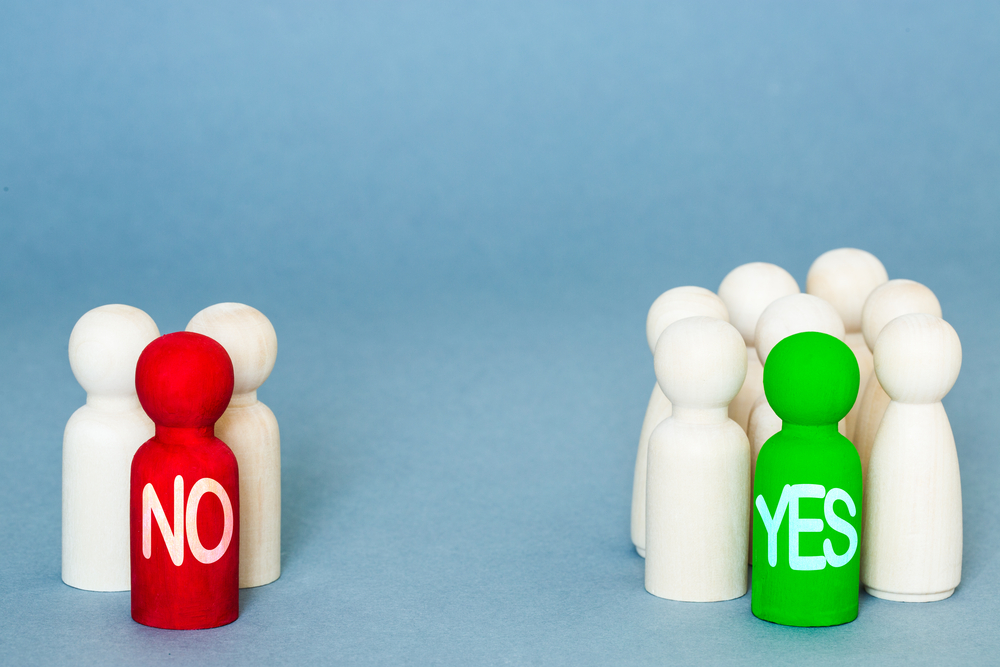Over the course of the last two years, the COVID-19 pandemic has infected millions, with long-haul symptoms of COVID permanently impacting the health of up to 23 million Americans. These long-haul symptoms are expected to have significant impacts on public health as a whole as more and more citizens become disabled. This will likely have significant impacts on the workforce — after all, it is much more difficult to engage in employment when workplace communities tend to be relatively inaccessible.
In light of this problem, we should ask ourselves the following question:
Should we prioritize disabled representation and accommodation in the corporate and political workforce, or should we focus on making local communities more accessible for disabled residents?
The answers to this question will determine the systematic way we go about supporting those with disabilities as well as how, and to what degree, disabled people are integrated into abled societies.
The burdens of ableism — the intentional or unintentional discrimination or lack of accommodation of people with non-normative bodies — often fall on individuals with conditions that prevent them from reaching preconceived notions of normalcy, intelligence, and productivity. For example, those with long COVID might find themselves unable to work and with little access to financial and social support.
Conversely, accessibility represents the reversal of these burdens, both physically and mentally, specifically to the benefit of the disabled individual, rather than the benefit of a corporation or political organization.
Adding more disabled people to a work team to meet diversity and inclusion standards is not the same as accessibility, especially if nothing about the work environment is adjusted for that employee.
On average, disabled individuals earn roughly two-thirds the pay of their able-bodied counterparts in nearly every profession, assuming they can do their job at all under their working conditions. Pushing for better pay would be a good step towards combating ableism, but, unfortunately, the federal minimum wage has not increased since 2009. On top of this, the average annual cost of healthcare for a person with a disability is significantly higher ($13,492) than that for a person without ($2,835). Higher wages alone are not enough to overcome this gap.
It is our norm, societally, to push the economic burden of disability onto the disabled, all while reinventing the accessibility wheel often just to make able-bodied citizens feel like they have done a good thing. In turn, we have inventions such as $33,000 stair-climbing wheelchairs being pushed — inventions that rarely are affordable for the working disabled citizen, let alone someone who cannot work — in instances where we could just have built a ramp.
In order for tangible, sustainable progress to be made and for the requirements of justice to be met, we must begin with consistent, local changes to accessibility.
It can be powerful to see such representation in political and business environments, and it’s vital to provide disabled individuals with resources for healthcare, housing, and other basic needs. But change is difficult at the large, systemic level. People often fall through the cracks of bureaucratic guidelines. Given this, small-scale local changes to accessibility might be a better target for achieving change for the disabled community on a national scale.
Of course, whatever changes are made should be done in conversation with disabled members of the community, who will best understand their own experiences and needs. People with disabilities need to be included in the conversation, not made out as some kind of problem for abled people to solve.
This solution morally aligns with Rawls’ theory of justice as fairness, which emphasizes justice for all members of society, regardless of gender, race, ability level, or any other significant difference. It explains this through two separate principles. The first focuses on everyone having “the same indefeasible claim to a fully equal basic liberties.” This principle takes precedence over the second principle, which states that “social and economic inequalities… are to be attached to offices and positions open to all… to the greatest benefit of the least-advantaged.”
By Rawls’ standards, because of the order of precedence, we should prioritize ensuring disabled citizens’ basic liberties before securing their opportunities for positions of economic and social power.
But wouldn’t access to these positions of power provide a more practical path for guaranteeing basic liberties for all disabled members of society? Shouldn’t the knowledge and representation that disabled individuals bring lead us towards making better policy decisions? According to Enzo Rossi and Olúfémi O. Táíwò in their article on woke capitalism, the main problem with an emphasis on diverse representation is that, while diversification of the upper class is likely under capitalism, the majority of oppressive systems for lower classes are likely to stay the same. In instances like this, where the system has been built against the wishes of such a large minority of people for so long, it may be easier to effect change by working from the bottom up, bringing neighbors together to make their communities more accessible for the people who live there.
Oftentimes, disabled people simply want to indulge in the same small-scale pleasures that their nondisabled counterparts do. When talking to other disabled individuals about their desires, many of them are as simple as able-bodied counterparts’ daily taken-for-granted lives: cooking in their own apartment, navigating public spaces simply, or even just being able to go to the bank or grocery store. These things become unaffordable luxuries for disabled people in inaccessible areas.
In my own experience with certain disabilities, particularly in my worst flare-ups that necessitated the use of a wheelchair, I just wanted to be able to do very simple things again. Getting to class comfortably, keeping up with peers, or getting to places independently became very hard to achieve, or simply impossible.
Financial independence and some kind of say in societal decisions would certainly have been meaningful and significant, but I really just needed the basics before I could worry about career advancement or systemic change.
Accessibility for disabled people on such simple scales only improves their independence, and independence for nondisabled people as well. Any change for disabled people at a local scale would also benefit the larger community. Building better ramps, sidewalks, and doors for people with mobility limitations within homes, educational environments, and recreational areas not only eases the burden of disability, but it also improves quality of life for children, the temporarily disabled, and the elderly in the same community.
Obviously, there is something important to be said about securing basic needs — especially housing, healthcare, food, and clean drinking water — but these, too, would be best handled by consulting local disabled community members to meet their specific requirements.
From here, we could focus on making further investments in walkable community areas and providing adequate physical and social support like housing, basic income, and recreation. We can also make proper changes to our current social support systems, which tend to be dated and ineffective.
The more disabled peoples’ quality of lives improve, the more likely they will feel supported enough to make large-scale change. What matters at the end of the day is that disabled people are represented in real-life contexts, not just in positions of power.
Representation isn’t just being featured in TV shows or making it into the C-Suite, it’s being able to order a coffee at Starbucks, get inside a leasing office to pay rent, or to swim at the local pool.
This is not the end-all be-all solution to end ableism, nor is it guaranteed to fix larger structural and political issues around disability, like stigma and economic mobility. But, by focusing on ableism on a local scale in a non-business-oriented fashion, we can improve the quality of life of our neighbors, whether they are experiencing long COVID or living with another disability. Once we have secured basic liberties for disabled folks, then we can worry about corporate pay and representation.





